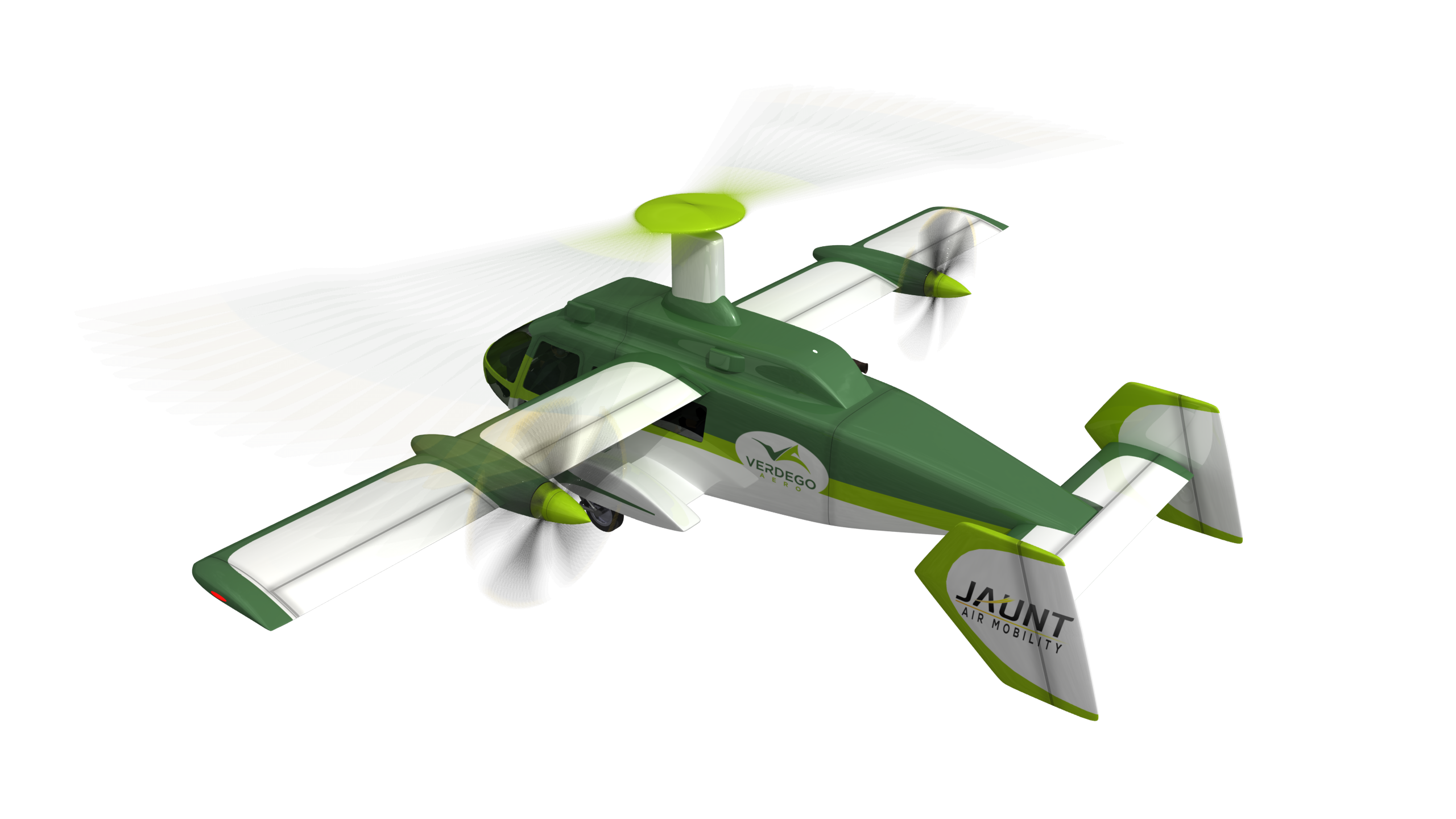Click Here to View This Page on Production Frontend
Click Here to Export Node Content
Click Here to View Printer-Friendly Version (Raw Backend)
Note: front-end display has links to styled print versions.
Content Node ID: 418822
Propulsion specialist VerdeGo Aero is partnering with eVTOL developer Jaunt Air Mobility to explore plans to develop a hybrid-electric aircraft. The U.S. companies are aiming to use VerdeGo’s hybrid-electric diesel generator system with the same battery pack Jaunt is using for its all-electric Jaunt Journey design.
In a December 16 announcement, Jaunt indicated that it is exploring hybrid-electric alternatives as a way to deliver longer range than that anticipated for the Journey passenger aircraft (80 miles), and also the planned Geap (cargo), Joust (military), and Jambulance (emergency medical) variants. The Texas-based company has not specified a range target for the new aircraft but did refer to the U.S. Air Force’s declared requirement to be able to make trips of at least 100 miles.
“While confident in the battery-electric Jaunt Journey for the urban air mobility market, our customers also have different operational mission requirements,” said Jaunt Air Mobility CEO Martin Peryea. “VerdeGo’s system offers a unique bridge to meeting those demands.”
Florida-based VerdeGo’s generator is intended to run on standard Jet-A fuel. The company says the propulsion system will reduce fuel consumption and carbon emissions by 40 percent compared with a comparable turbine-powered aircraft while providing four-times more energy than battery-electric powertrains.
“The additional range enabled with VerdeGo’s hybrid system applied in the Jaunt aircraft will enable either longer missions or multiple short back-to-back missions without the requirement for energy infrastructure at every landing site,” said the company’s CEO Eric Bartsch.
In recent weeks, VerdeGo has announced partnerships with two other companies developing hybrid-electric aircraft. It is supporting Airflow’s plans for an eSTOL freighter and XTI Aircraft’s new program to develop a cargo-carrying version of its TriFan eVTOL.
The Jaunt eVTOL family is based on its patented Reduced Rotor Operating Speed Aircraft (ROSA) technology. The company describes its aircraft as a “compound helicopter” since it features a main rotor and a fixed-wing with propellers. As such, it intends to achieve type certification under the FAA’s existing Part 29 rules for rotorcraft.
Jaunt is planning to start low-rate production in 2026, with type certification by the end of that year. This will be a piloted aircraft, with an autonomous version targeted to receive approval in 2029.
The Jaunt team has started test-flying a Jaunt Technology Demonstrator to acquire flight data to support design work. A full-scale type certification model is expected to start flights in 2023.
Jaunt is working with three established aerospace groups on the program. BAE Systems’ Controls and Avionics Solutions division is working on power management, while Triumph Aerospace Structures is providing engineering and manufacturing support and Honeywell is responsible for avionics, navigation systems, the electric propulsion system, and connectivity systems. The company says it is in discussions with a possible manufacturing partner outside the U.S.
In October, Jaunt Air Mobility announced plans to partner with PS&S and Price Systems to advance ground infrastructure to support its planned UAM air taxi services. PS&S is an architectural firm and Price Systems is a cost-estimation technology company. The new Access Skyways program is mainly focused on developing facilities such as vertiports to be used by eVTOL aircraft.
